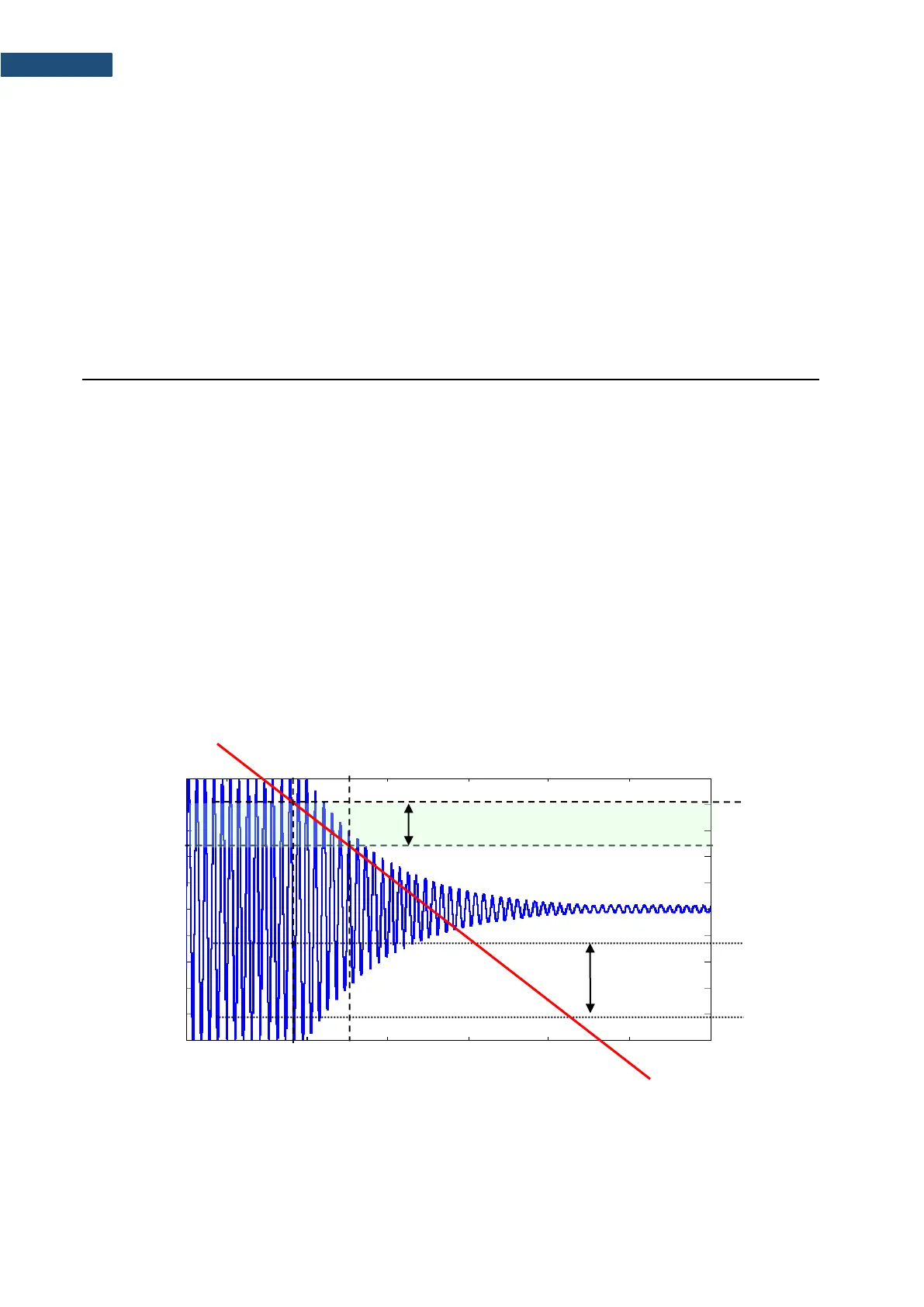SV 977D User Manual - Appendixes
60 dB. The 60 dB dynamic condition is impractical in real measurements (very difficult to fulfil) hence the
reverberation time (RT 60) is obtained using the slope coefficient of the decay curve. The type of the
definition from which slope coefficient is calculated (EDT, RT 20, RT 30 or user defined) depends on the
difference between levels L
1
and L
2
(the difference between background noise level and sound source
level) of the decay curve and it depends on significantly from the acoustic source ability. If the level
difference is larger than 45 dB, the RT 60 parameter can be calculated using three definitions: EDT, RT 20
and RT 30.
The real measurement results are not as smooth as the curves presented on graphs in Figure 1. In order
to point out the interesting decay curve region (the position of the markers t
1
and t
2
) some measurement
data processing (in general signal smoothing by averaging) need to be applied.
E.2. DEFINITIONS AND CALCULATION OF RT 60 REVERBERATION TIME
➢ EDT (early decay time):
The EDT decay curve region is pointed out by markers t
1
and t
3
(cf. Fig. 2). It is checked whether the
selected decay curve region has proper dynamics for the EDT calculation:
L
1
– L
2
>= 10 dB
L
2
– L
3
>= noise margin
It is recommended by the ISO-3382 standard to set 10 dB value for noise margin.
In case of the impulse method, the sound pressure level values between points t
1
(with L
1
level) and t
2
(with L
2
) are approximated with the straight line (y = a · x + b) by the linear regression. Before
approximation the EDT value is calculated using the slope coefficient ‘a’ according to the formula:
EDT = – 60.0 / a
In case of the decay method, the EDT value is calculated according to the formula:
EDT= 6 · (t
2
– t
1
)
Fig 2. The EDT evaluation
